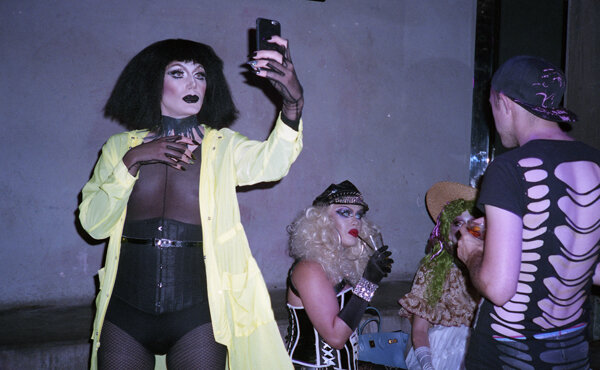STILL HERE - “Ehkwashim!”
Text Pamela Nagler
Photography Julian Lucas
Published Dec 6, 2021 9:52am PST
The Original People of the Los Angeles Basin & the Channel Islands (4,000 square miles). The Los Angeles Basin has always been well-populated. Sometimes we fall into a habit of thinking that the Native people who lived here, before the Spanish, Mexicans, U.S. citizens came, were few, primitive, isolated and without technology, but nothing is farther from the truth.
The Los Angeles Basin was heavily populated then, just as it was now - and the people who lived here were well-connected to each other through trade and culture that extended westward to the islands (they were navigators who negotiated the sea in plank canoes) and westward to the American Southwest and up into the northern regions and south to Mexico and Baja California.
There was an extensive network of trails - just as there’s an incredible network of highways and roads and freeways today. There is also a widely circulated belief that the people of the Los Angeles basin are extinct, but this is simply not true - they are still here, living and working amongst us - some 4,000.
The indigenous people of the Los Angeles Basin lived in a patchwork or mosaic of ecosystems - a few miles to the South, it was desert; to the east it was mountains; to the west, it was ocean. Ten miles one way or another, people spoke slightly differently, harvested somewhat differently, hunted in different places, celebrated somewhat differently - according to their environment and customs. This is not so different from the towns and cities that dot Southern California’s landscape today.
Living in 100 or so villages or rancherias of 100 people or so, the original people had no name in common for the 5,000 who lived here, but they had names for other people who lived elsewhere - mountain people, desert people, coastal people - but those who inhabited these rich river valleys fed by rivers and springs from the mountains, self-identified by their village or rancheria rather than their linguistic group.
Make no mistake - this area was not a desert until we made it one. The story of the original ones who lived here is the story of rivers where the foliage was so dense, a squirrel could hop from tree to tree from Los Angeles to Long Beach and never touch ground. Families would wake in the morning and bathe in the river, warming themselves by the fire as they combed their hair and prepared for the day.
In the case of those who lived in Pomona, they called themselves Toybipet, the inhabitants of Toybingna - located nearby were the rancherias of Cucamonga and Asuksangna (Azusa). On the Pomona High School campus, there is a graveyard for 118 bodies buried at what’s called the Palomares Cemetery. In 1837, Californio Ygnacio Palomares received a Mexican land grant for Mission San Gabriel’s Rancho San Jose - a vast cattle ranch. Palomares Adobe, located nearby, was located right next to a Native rancheria because that’s what the Spanish/Mexican colonists did, locate their rancho near a Native rancheria so they could take advantage of Native labor. When Ygnacio Palomares arrived, he reportedly said that the valley was filled with Natives.
Courtesy of Julian Lucas 2021
Since 2006, four organizations have claimed to represent the people of the Los Angeles basin: the Gabrielino-Tongva Tribe, the Gabrielino/Tongva Tribe, the Kizh Nation (Gabrieleño Band of Mission Indians); and the Gabrieleño/Tongva Tribal Council. Tongva comes from an Gabrielino informant at the turn of the last century. Kizh means ‘people of the willow houses.’ Gabrielino refers to the fact that they were descendants of those who lived at the Mission at San Gabriel.
In recent years, the state of California has broadened its History-Social Studies framework to include more information about Native Californians - how they lived before colonization, how they were affected by the arrival of settlers, and how it is important that California public schools teach that missions were “sites of conflict, conquest and forced labor.”
The people of the Los Angeles Basin never ceded their land to Spain, to Mexico, to the U.S. We live and work and play on their ancestral lands.
Pamela Casey Nagler, Pomona-born, is an independent scholar, currently conducting research on California’s indigenous people, focusing on the Spanish, Russian, Mexican and US invasions between 1769 and the 1860s. The point of studying this history is to tell us how we got here from there.





























